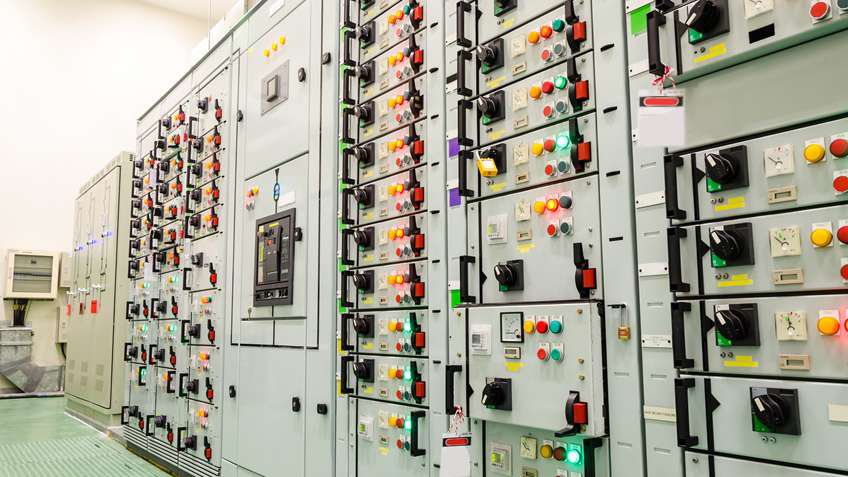By Dean Katsiris and Dave Scheuerman, Littelfuse Inc.
As any experienced industrial electrician can attest, arc-flash events can be destructive, costly and even fatal. In recognition of the dangers these events pose, the code-making panels and committee that develop the National Electrical Code® (NEC) standard have continued to refine the requirements related to arc flash protection. The newest edition of the standard, NEC 2017, includes some important changes that will affect how electrical equipment is designed, installed and maintained.
To provide some perspective on the latest changes, here’s a brief review of the NEC standard’s history as it relates to arc-flash protection. The first discussion of arc flash appeared in the 2002 version. The 2011 version included a requirement to label equipment for arc-flash hazards, and this requirement was refined further in NFPA 70E in 2015 to add the arc-flash boundary and incident energy to the labels. Incident energy is calculated based on overcurrent device clearing times and available fault current at that equipment location.
Arc Energy Reduction
What’s new in NEC 2017? One thing that’s new is an update to Article 240.87, Acceptable Methods for Arc Energy Reduction, which defines when arc-flash mitigation must be applied. Given that incident energy is a product of current and time, fault clearing time is a special concern wherever significant currents are present. If a circuit breaker can be set to trip at 1,200 A or higher, then one of a number of methods to reduce clearing time must be employed. These methods include the use of zone-selective interlocking, differential relaying and an energy-reducing maintenance switch.
The update adds two new methods: an instantaneous trip-setting or instantaneous override. Although it always is preferable to de-energize electrical equipment before examining it or working on it whenever feasible, when a circuit breaker is used without an instantaneous trip (or with an instantaneous trip above the prospective arc-fault current), the means to reduce the incident energy must be provided when energized work must be performed.
Arc Energy Reduction for Fuses
The 2017 edition adds Article 240.67 Arc Energy Reduction (for Fuses). In much the same way that Article 240.87 covers methods for arc energy reduction for circuit breakers, Article 240.67 covers requirements for arc energy reduction for fuses and fusible switches rated 1,200 A or higher using the same incident energy reduction methods as in 240.87. The underlying goal is to reduce the clearing time at the available arcing current.
Unless the fuse’s clearing time is shorter than 0.07 seconds, one of the following methods, some of which are the same as those for reducing that clearing time with circuit breakers, must be used: differential relaying, energy-reducing maintenance switching with local status indicator, an energy-reducing active arc-flash mitigation system or an approved equivalent means.
Clearing Reduction Methods
Equipment designers, controls engineers and plant engineers share a common interest in keeping their approaches to arc-flash mitigation NEC-compliant, but the best approach will depend on the particular application. Some background on each approach may be helpful when choosing the best one for a specific situation.
Zone-selective interlocking (ZSI) will detect a fault and block an upstream protective device from operating until the local protective device has a chance to clear the fault. If the local protective device does not clear it, the upstream device attempts to clear it. The goal is to limit the power outage to the area of the fault.
ZSI allows the local circuit breaker to operate instantaneously when the arc-fault current is above the breaker’s instantaneous setting. If the arc-fault current is below the local breaker’s instantaneous setting, ZSI still will trip it in its instantaneous time but with an additional processing and communications delay that typically is 50-100 ms.
Differential relaying uses current transformers on both the line and load sides of the protected equipment that monitor current to ensure it is equal on both sides. A shunt trip on the circuit breaker is activated if the current falls out of equilibrium. Regardless of the means of current measurement, the delay (in this case at least 25 ms) necessary for analysis does not make differential protection as effective a means of arc energy reduction as some of the other methods listed.
Differential relaying, though complex, does well at detecting insulation breakdown in a predictive manner; however, it doesn’t do a good job of mitigating arc flash where the source is not bad wiring or a conductive medium (wrench or rodent) interposed across phases.
An energy-reducing maintenance switch with local status indicator allows a worker to set a circuit breaker to instantaneous trip while working within an arc-flash boundary as defined in NFPA 70E and then return the trip unit back to a normal setting after the potentially hazardous work is completed. Often the switch is a feature of feeder- and motor-protection relays, which can trip the breaker at its instantaneous setting, but it also is an option on some breakers. The local status indicator lets the worker see that protection is engaged and confirms the switch is returned to the proper position when the work is completed.
Some installations are designed to use door switches or proximity sensors to engage “maintenance mode” rather than relying on human intervention. Regardless of the means by which the switch is implemented, one drawback to the maintenance-switch method is that it does not provide arc-flash protection during normal operation, when maintenance is not being performed.


![Figure 2. This table shows attributes of the arc-flash mitigation techniques compliant with NEC® 2017. [CLICK TO ENLARGE]](https://rockwellautomation.scene7.com/is/image/rockwellautomationstage/tj1705-chart--graphic-280w.280.jpg)
